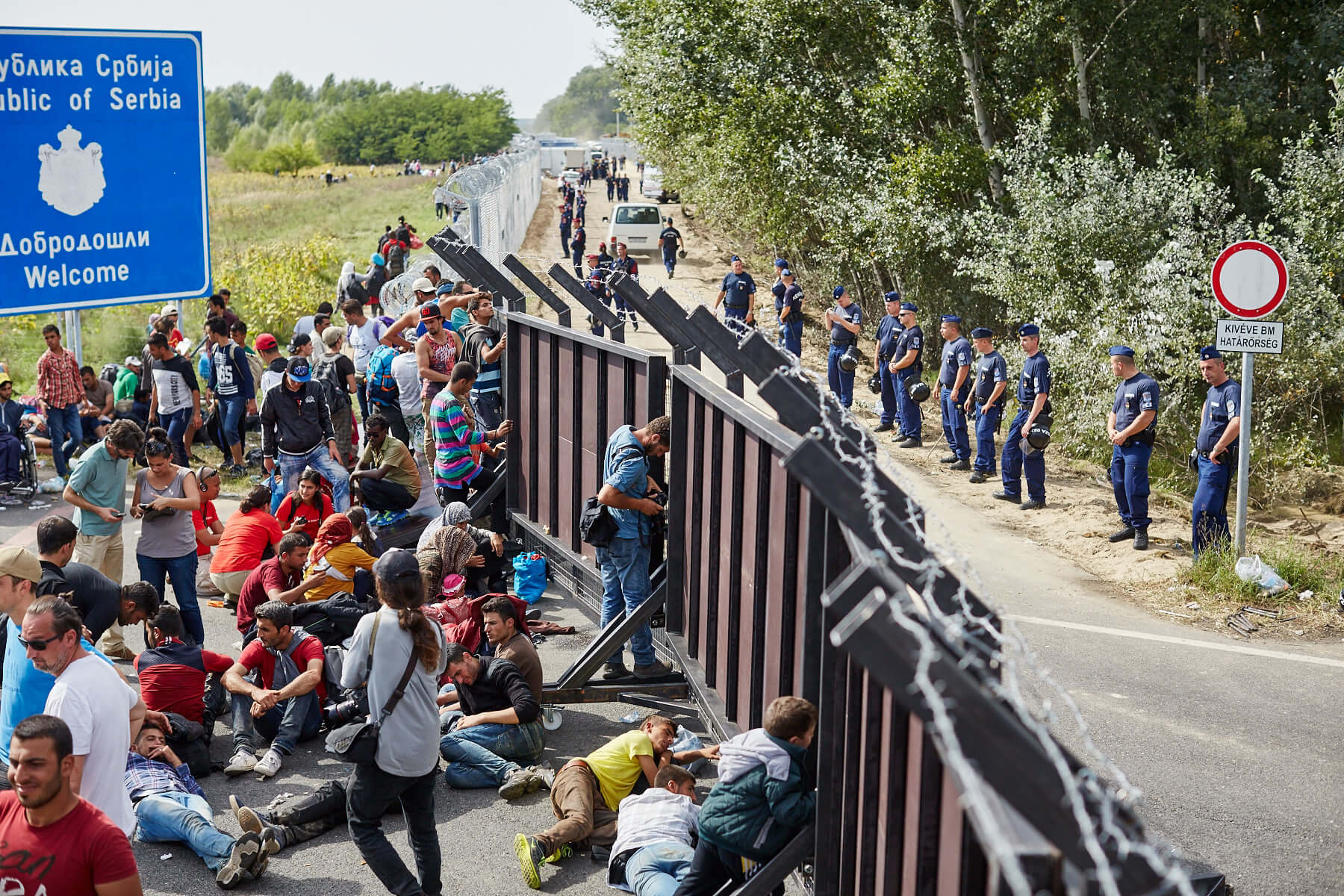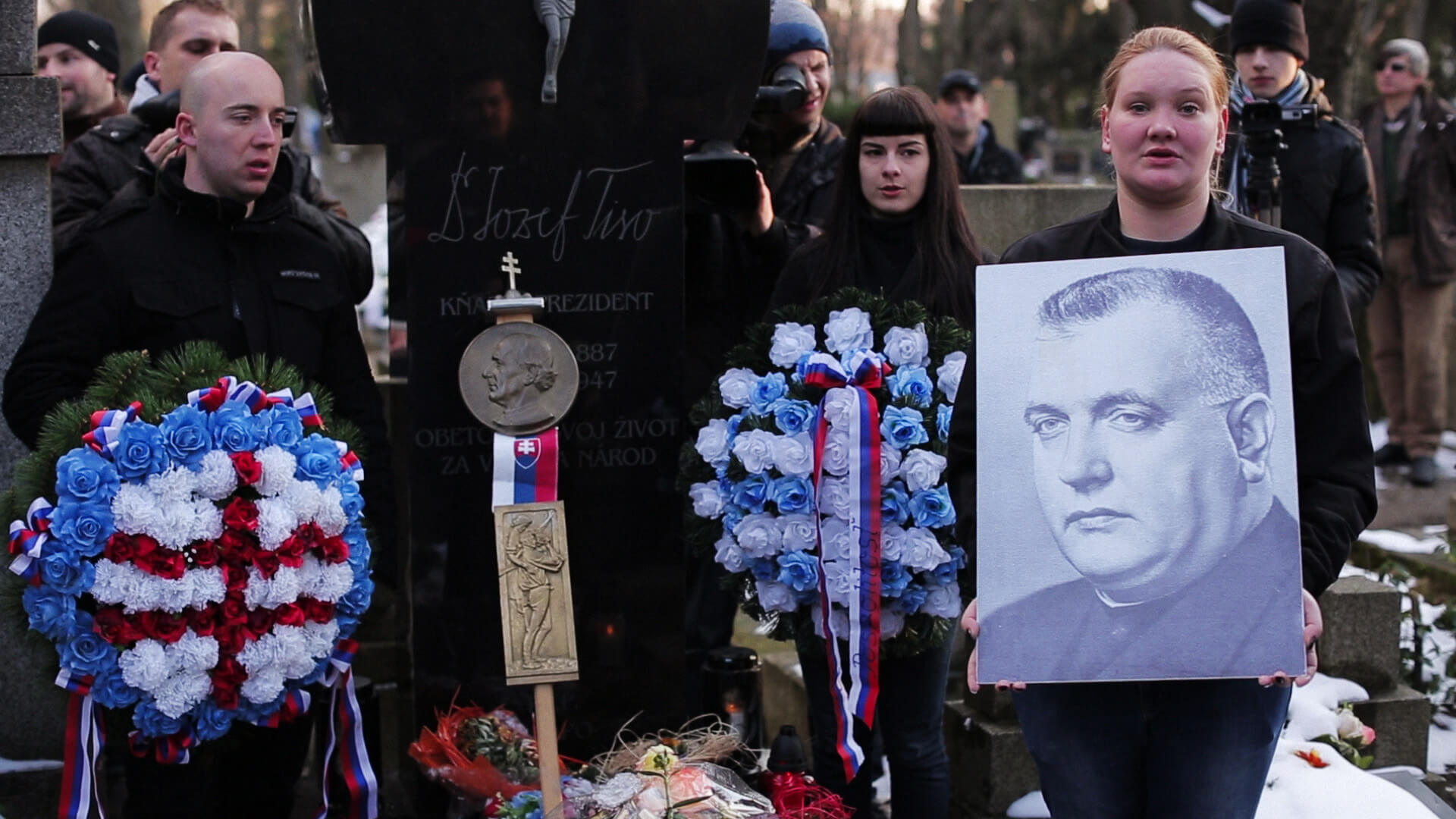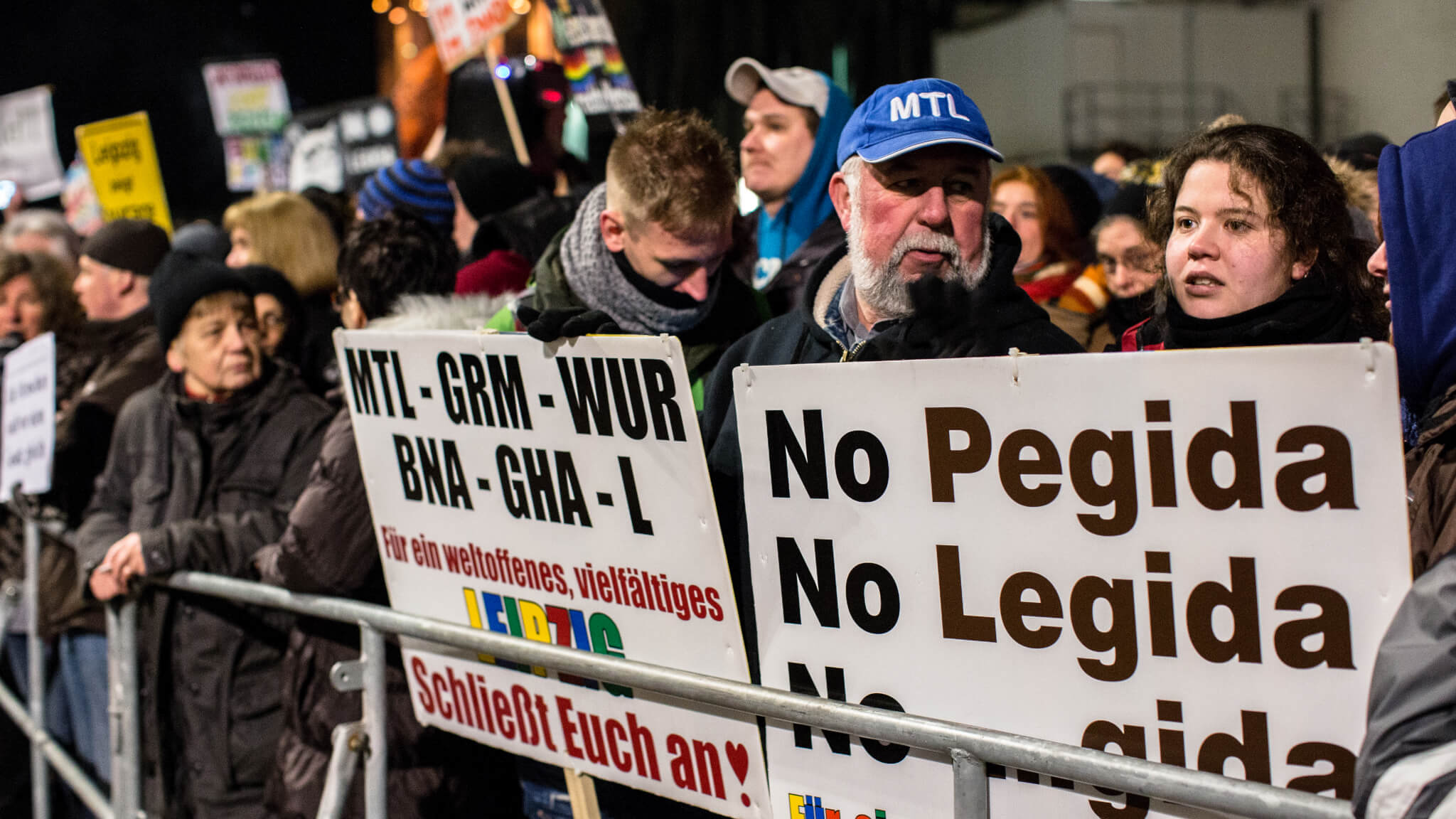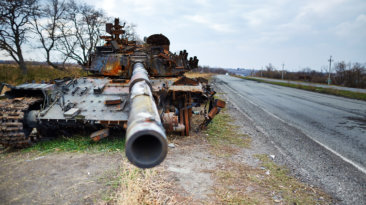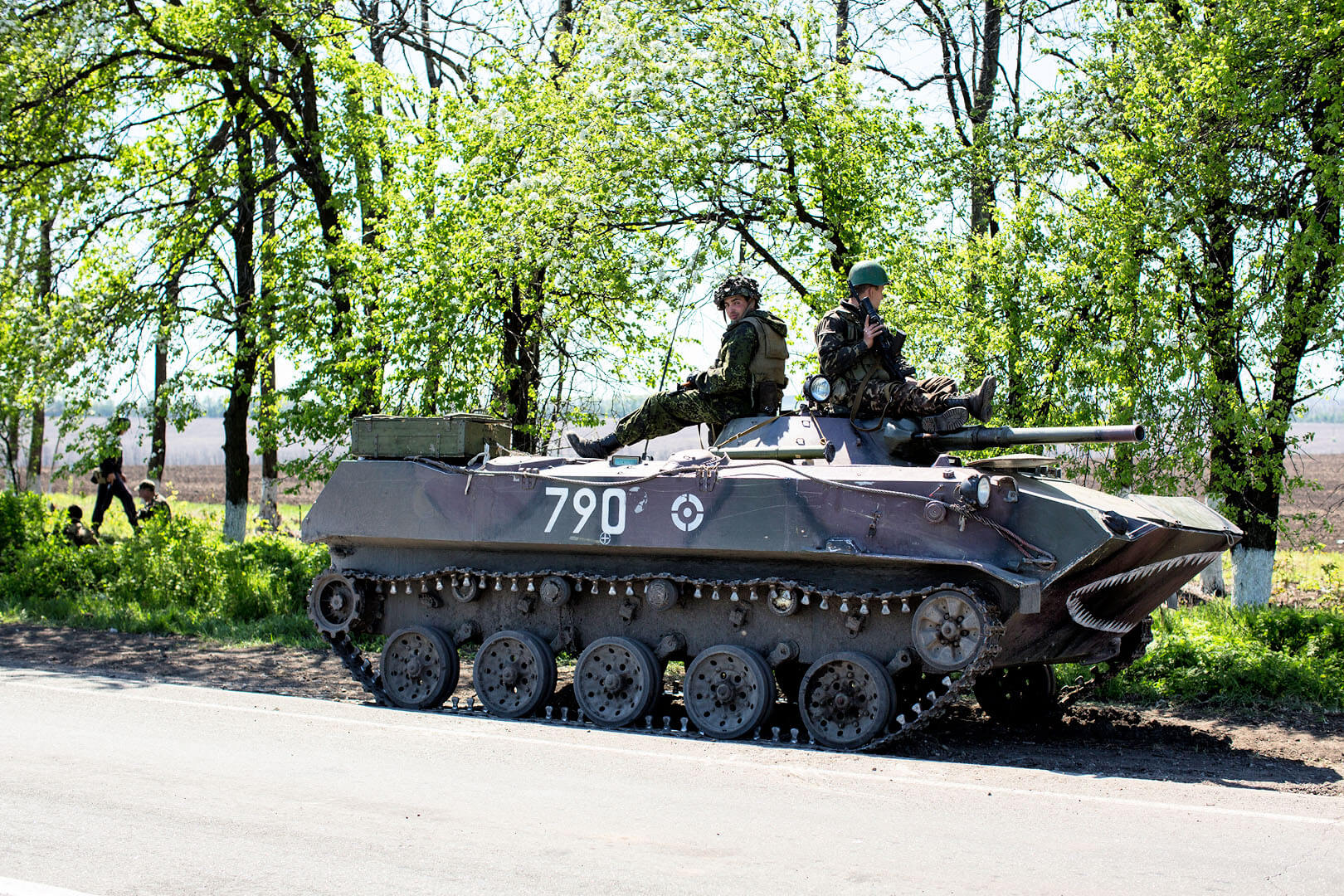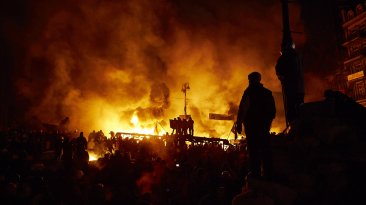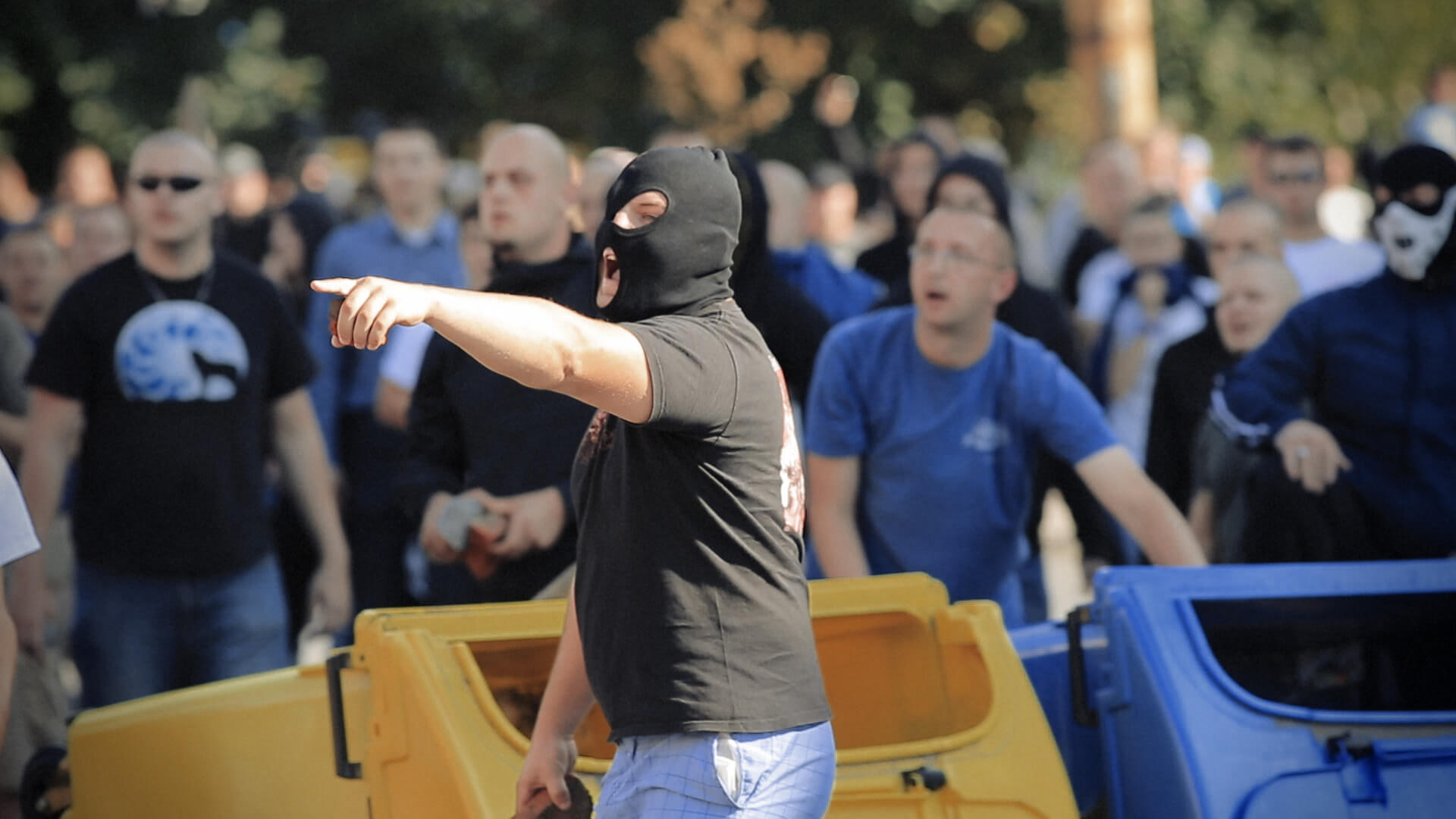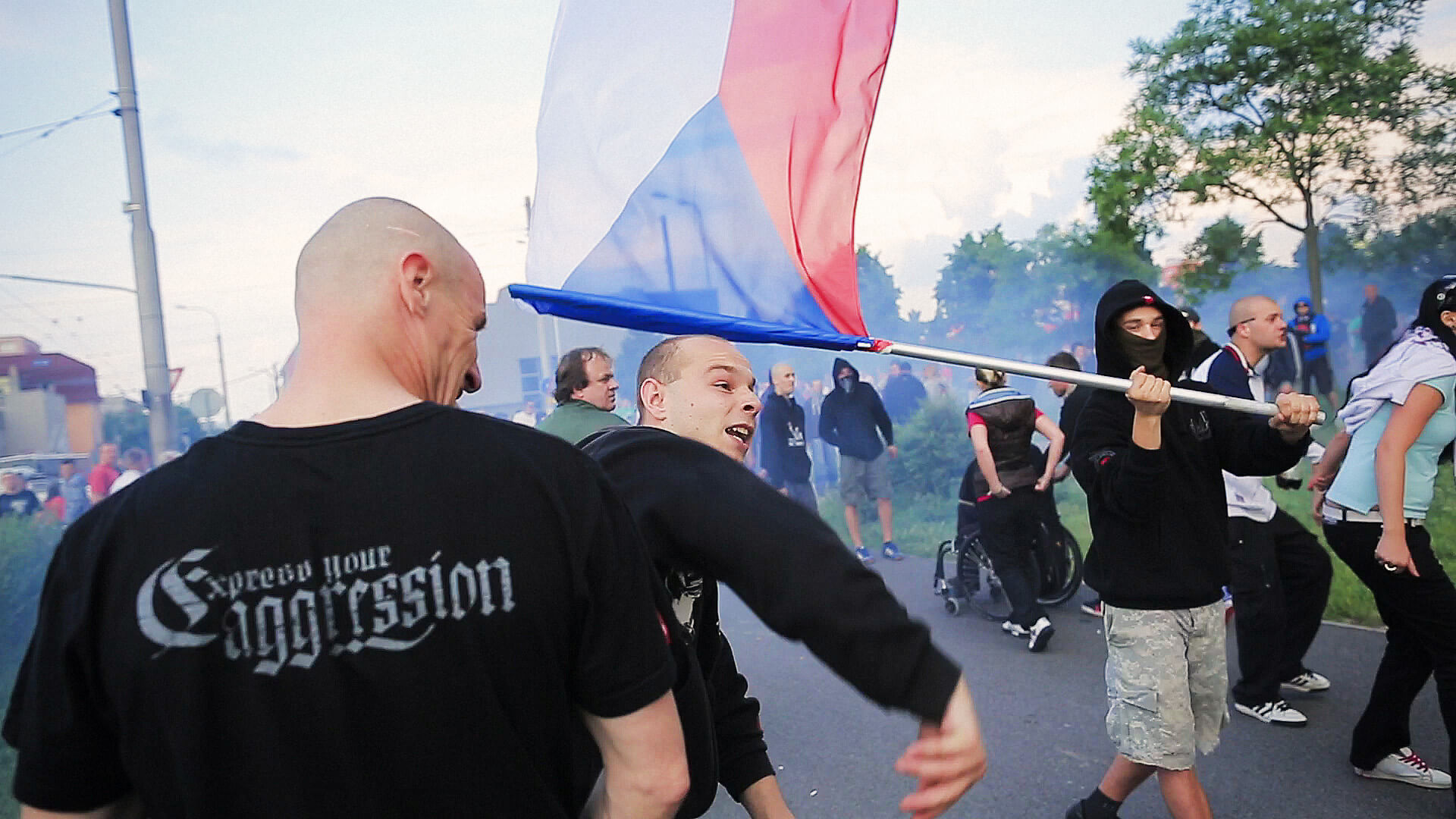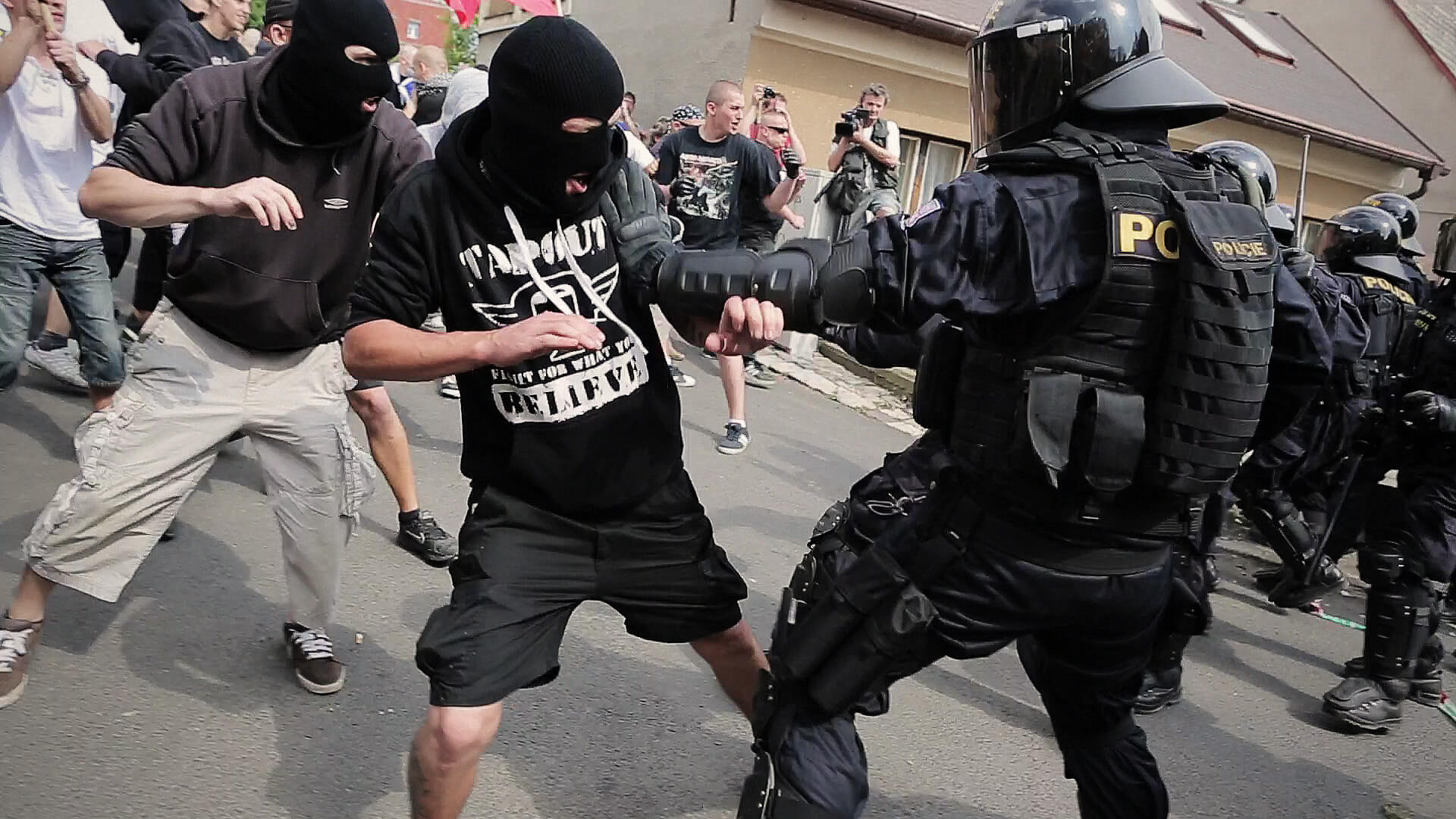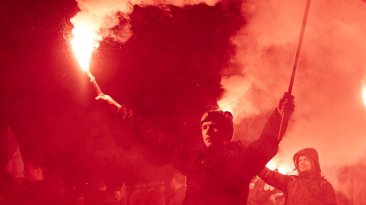On March 14, 2015, the wartime Slovak Republic, an ally of Nazi Germany, was commemorated by extremist nationalist groups during the annual “For Independent Slovakia” march. In previous years, the event had witnessed violent clashes between the extremist groups and anti-fascist activists. However, this year, marking the 76th anniversary of the establishment of the Slovak state, police intervention successfully prevented clashes by...
Author - Rafavideoart
Filmmaker, visual artist, and photographer Rafavideoart studied at the Academy of Arts in Banská Bystrica and the Academy of Fine Arts in Warsaw. Since 2009, he has been documenting the growing nationalism and far-right groups within the Visegrád Group countries. In Slovakia, he is actively involved in transforming the segregation walls surrounding the Roma communities.
Filmár, vizuálny umelec a fotograf Rafavideoart študoval na Akadémii umení v Banskej Bystrici a na Akadémii výtvarných umení vo Varšave. Od roku 2009 dokumentuje rastúci nacionalizmus a ultrapravicové skupiny v priestore Vyšehradskej štvorky. Na Slovensku sa angažuje v pretváraní segregačných múrov ohraničujúcich rómskej komunity.
Legida, short for “Leipzig gegen die Islamisierung des Abendlandes” is a German right-wing populist movement that emerged as an offshoot of the more prominent Pegida movement. Legida, which is centered in the eastern city of Leipzig, was established in early 2015 and has been organizing weekly demonstrations since then. Like Pegida, Legida’s stated aim is to protest against what it sees as the Islamization of Germany and the...
On November 11th, 2014, Poland celebrated its Independence Day, but the day was marred by violence during the Marsz Niepodleglosci (March of Independence) organized by far-right groups. Tens of thousands of participants marched through the streets of Warsaw to mark the anniversary of Polish independence, but a group of several hundred masked men broke away from the main march and threw stones and flares at lines of riot police. The police...
This video captures the civilian population caught in the middle of the ongoing war in Ukraine, which started with the Russian annexation of Crimea in 2014. The conflict has been fueled by a hybrid war, involving not only military operations, but also propaganda, cyber attacks, and the support of separatist movements. Despite several ceasefires, the fighting has continued, and the conflict has caused the largest refugee crisis in Europe since...
Ukrainian forces mobilized near Sloviansk and Kramatorsk, where separatists had seized government buildings. Despite the tense atmosphere and likelihood of conflict, the mood in eastern Ukraine remained defiant. Sloviansk, a small industrial town near the Russian border, transformed into a potential battleground. Armed pro-Russia activists occupied a police station and were prepared to face Ukrainian forces. The situation escalated as machine...
In late 2013 and early 2014, anti-government protests known as EuroMaidan began in Ukraine, triggered by President Viktor Yanukovych’s decision to abandon closer ties with the European Union in favor of Russia. In December 2013, Russia offered Yanukovych a $15 billion bailout and a 33 percent discount on imported natural gas. The protests turned deadly on January 22, 2014, when at least three protesters were killed by gunshot during a...
V61: March of far-rights (Polish and Czech hooligans) against Roma people in Ostrava
During the summer of 2013, the Czech Republic saw a wave of far-right rallies against the Roma people. These rallies were sparked by a violent incident at a swimming pool in the town of Dubí, where a group of Roma individuals allegedly attacked a non-Roma woman who had confronted a young Roma boy for splashing water. The incident was widely reported in the media and quickly became a topic of debate in Czech society. On June 24th, 2013, anti-Roma...
Far-right protests in Ceske Budejovice against the Roma community turned violent on Saturday, 29 June 2013, resulting in eight people being injured, including two police officers. More than 100 people were detained during the clashes, and police found baseball bats, brass knuckles, gas pistols and other weapons in possession of the demonstrators. Protestors had attempted to reach neighborhoods where the Roma population was prominent, leading to...
On June 22, 2013, supporters of the radical Workers’ Party of Social Justice (DSSS) gathered at the Légií Square on the outskirts of the Roma quarter in Duchcov, Czech Republic. Shortly after the DSSS leader’s speech, the protesters clashed with police when they attempted to break through a police cordon to reach a group of Roma residents. At the same time, the civil association Konexie organized a public gathering called...
There are some issues in which, in contrast to others, most of the former SFR Yugoslavia countries are not falling behind compared to other countries of Europe. One of those issues is, of course, the new nationalism which is widespread over the whole Europe and its frequency is dependant on the country and the region in which it is manifested.As in other European post-socialist countries, right-wing politics was the most usual orientation of the...















